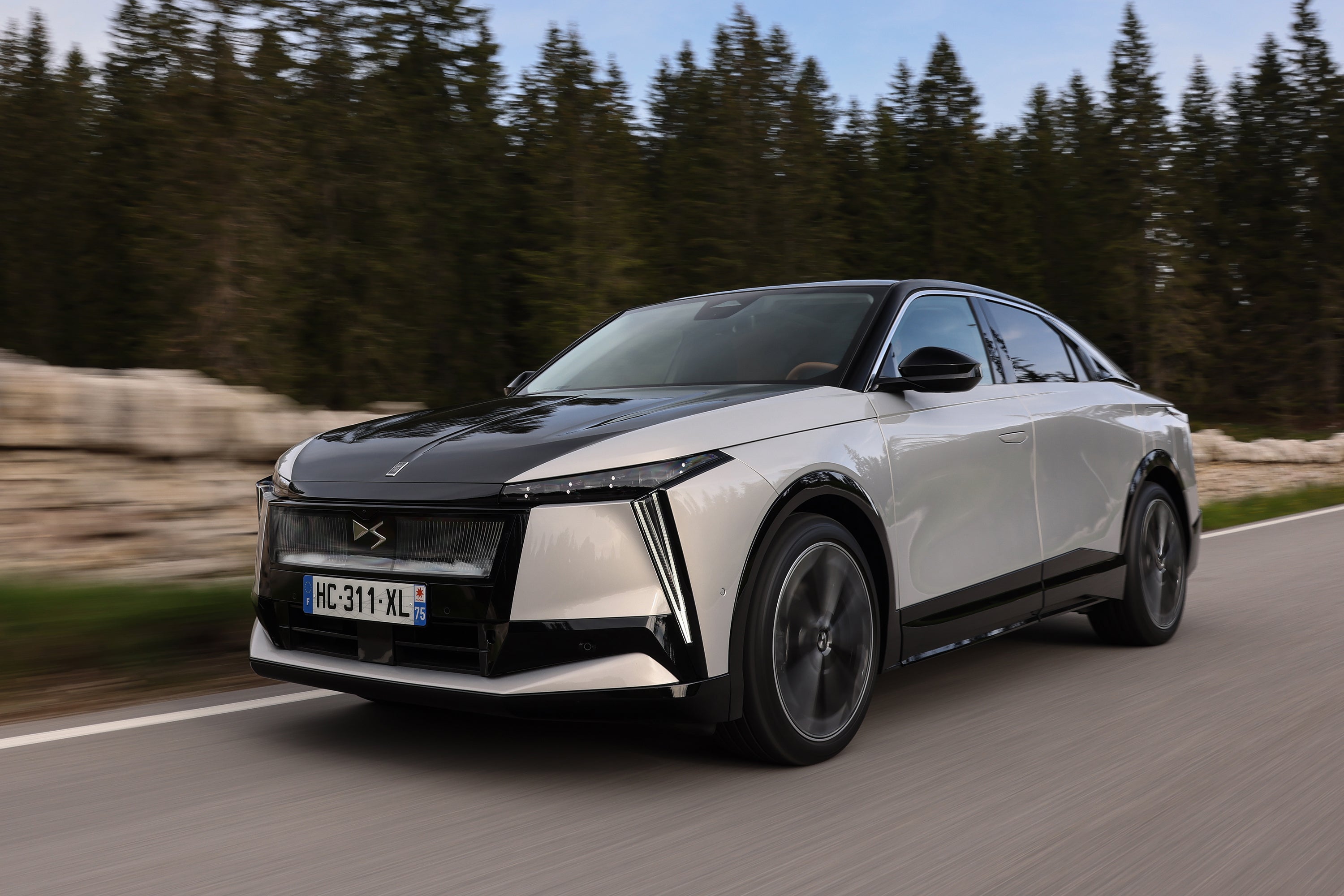DS No8 Review 2025: Price, specs & boot space
Written by Matt Robinson
- 2025
- SUV
- EV
Quick overview
Pros
- Striking looks both inside and out
- Impressive range on a full charge
- Comfortable ride
Cons
- 'Out there' interior won't be for everyone
- X-shaped steering wheel is weird
- Price could be an issue for some
Verdict: Is the DS No8 a good car?
"The No8 is a sign that we can finally start taking DS seriously as a premium competitor to the likes of Audi and Mercedes-Benz. It feels plush, comfortable and pleasingly different from more obvious options."
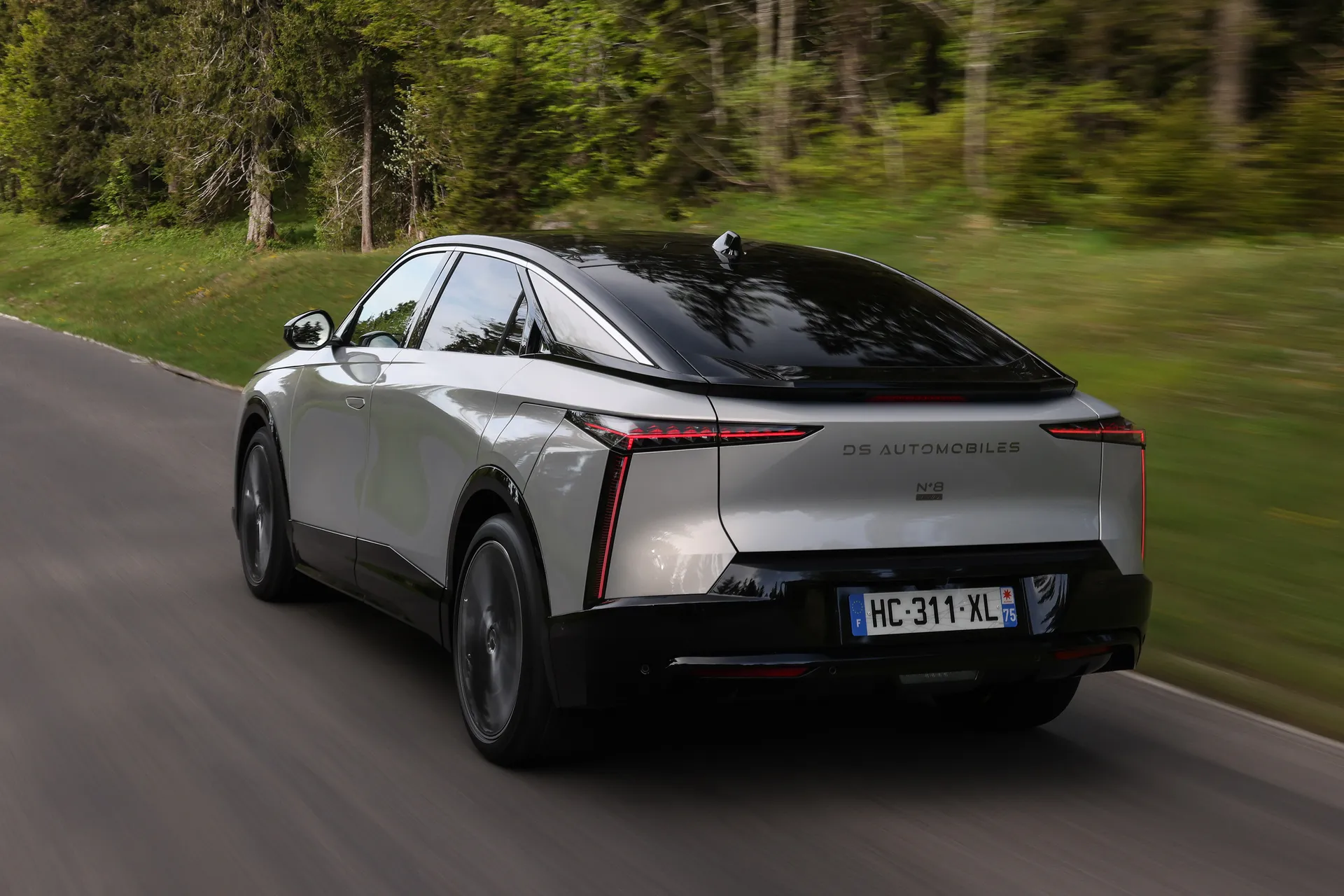
Believe it or not, more than a decade and a half has passed since DS Automobiles was created. A lot has changed in that time, with the fledgling firm's initial entries, which were little more than lightly worked-over Citroen models. Fast forward to today, and the all-new DS No8 is not just drastically different from any Citroen model, it's also unlike anything else in the massive Stellantis portfolio of brands, despite using a familiar box of bits and pieces.
As for exactly what it is, your guess is as good as ours. It rides high, like an SUV, but has a saloon-esque side profile. It's not a saloon, in any case, with its fastback-like rear end housing a tailgate. The list of intended rivals DS has come up with confuses matters further, with a diverse range of cars including the BMW i4 and Audi Q6 e-tron mentioned.
It's probably fitting that the DS No8 is so hard to classify, because it seems determined to do its own thing. Away from the striking exterior, there's an atypical interior awash made from an unusual blend of materials and, strangest of all, an X-shaped steering wheel. We're less sure about that last bit.
And then there's the name. For an English speaker, it's referred to as the 'DS Number Eight'. A bit like how you refer to Chanel No.5, and eventually the entire DS range. As well as the incoming DS No7, which uses the same 'STLA Medium' platform as the No8, the DS 4 was recently renamed 'DS No4' to coincide with a facelift.
Although the STLA Medium architecture can take combustion engines as well as electric motors, the No8 is, for now at least, exclusively electric. There's a choice of two battery sizes and two motor layouts. For the latter, you can either have a single motor, front-wheel drive car, or a dual motor option to give all-wheel drive.
Whatever category the No8's body sits in, it's certainly slippery. The car's sleek aero profile helps the Long Range versions go up to 466 miles on a single charge, according to the official figures. Even versions with the smaller battery manage comfortably over 300.
Is the DS No8 right for you?
If you want a luxury-focused EV and are determined that it isn't going to be from Audi, BMW or Mercedes-Benz, quite possibly. You might have also looked at other more leftfield options like the Polestar 4, and decided that you want something that'll help you stand out even more. We have a sneaking suspicion that, if we're describing you, you'll be in the minority, and that we won't be seeing many DS No8s on UK roads..We're happy to be proven wrong, of course.
What's the best DS No8 model/battery to choose?
The entry-level DS No8 Pallas is already loaded up nicely with equipment, so we'd be tempted to steer you towards that, and probably with the Long Range battery, unless you don't think you'll make the most of the extra range it brings.
We're still a little torn on the motor. Although the single motor setup will provide more than enough performance for most, the dual motor arrangement did seem more 'fitting' for a car with premium aspirations. You have to just bear in mind that it's only available with the range-topping Etoile trim and with the bigger battery, so it ends up being an expensive choice.
What other cars are similar to the DS No8?
Although nothing else out there right now is quite like a DS No8, there are plenty of alternatives kicking around. Along with the BMW i4 and Audi A6 e-tron we've already mentioned, the Polestar 4, while more expensive, is one option. Another, if you're intending on going for something not so obvious, is the Genesis GV60.
Normally in a review of a Stellantis product, we'd be able to rattle off a list of very similar products, but although we've experienced many of the parts that make up the No8 in other products like the Peugeot e-5008, they're very different propositions. Perhaps the incoming Lancia Thema will be closer in ethos, but it's yet to be revealed, and we don't know if it'll even be sold in the UK.
Comfort and design: DS No8 interior
"Inside, the DS No8 is refreshingly different from German alternatives, but some of the detailing might be a bit 'out there' for some."
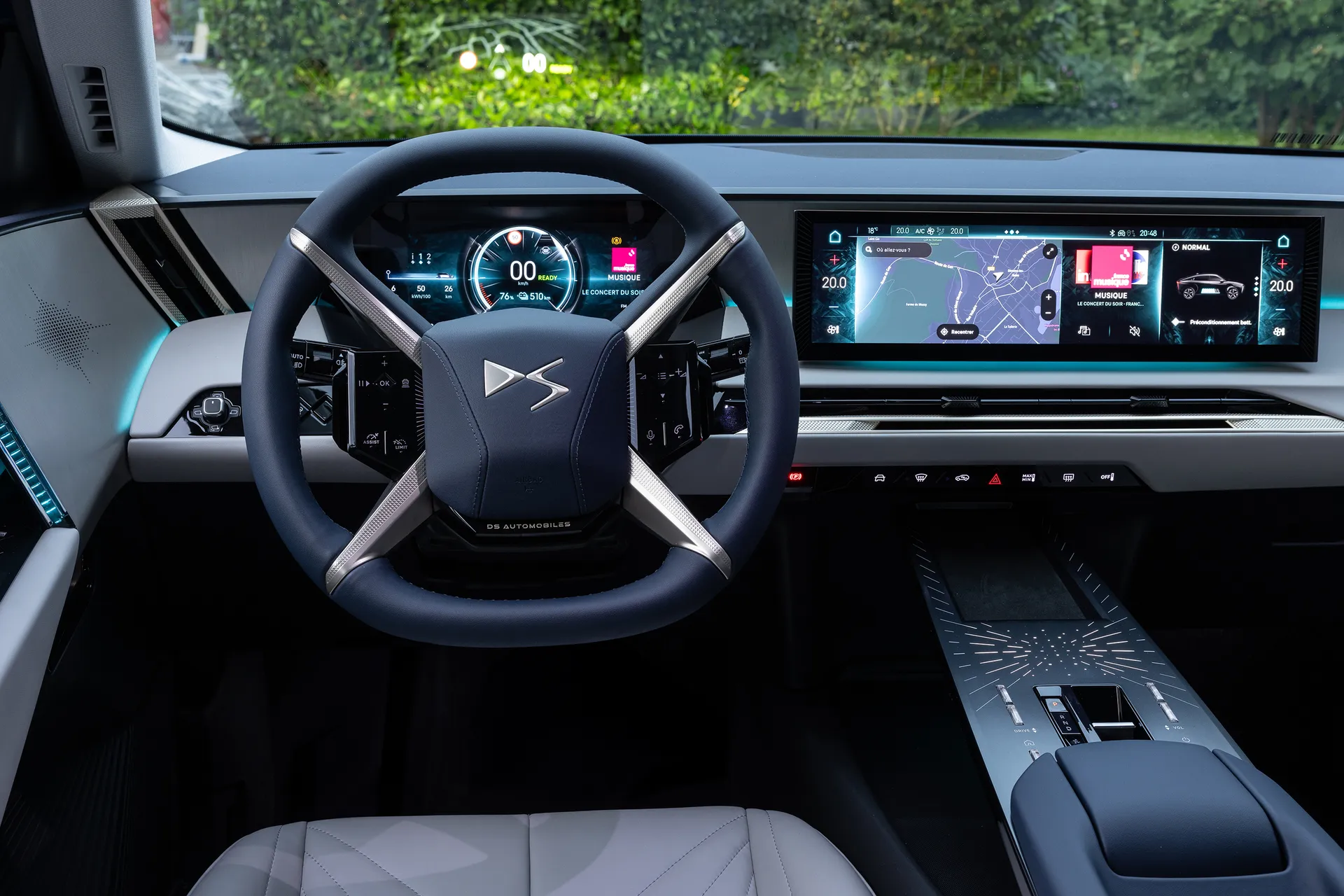
You get the feeling the DS interior design team had the opposite of a mood board, with the cabins of various German premium car alternatives pinned as examples of what to avoid rather than be inspired by. The interior of the No8 sets itself apart with 'Clous de Paris' watch-inspired patterning, laser-cut aluminium and in the Jules Verne special edition, some nods to the author's 1865 book From the Earth to the Moon.
It certainly sets itself apart from not just the aforementioned German options, but also pretty much anything else, including cars from the Stellantis portfolio of brands, although it doesn't take long to spot quite a bit of switchgear and an infotainment system shared with its stablemates.
Whether or not it's the kind of 'different' you want is very much down to personal preference, but new car buyers tend to be a conservative lot, so for some, we can see the DS No8 feeling like... a lot. The steering wheel is downright bizarre, too, as we'll explain further in the driving section of this review.
In terms of comfort, we have no complaints, with soft, supportive seats keeping bum and back pain at bay.
Quality and finish
DS has mostly done what it needs to with the No8's cabin quality to have it seriously considered as a premium car. Most of the materials come across as expensive-feeling, and everything is finished well. One exception is the Clous de Paris stuff, which looks and feels a bit cheap, and dare we say it, chintzy. However, the No8 wins back points for not overusing our most loathed car interior material – scratch-prone gloss black plastic.
Infotainment: Touchscreen, USB, nav and stereo in the DS No8
Although the DS No8 does a better job than most Stellantis products of hiding its shared DNA, the infotainment screen is a big giveaway. Well, we say 'big', but despite measuring 16-inches, it doesn't offer a huge amount of useful 'real estate' for your fingers to prod.
The problem is it's an ultra-widescreen unit, with the far edges taken up by temperature shortcuts for the two climate zones. This just leaves a more modestly sized bit in the middle featuring small on-screen controls that aren't the easiest to use on the move. Its responsiveness is OK, but loading certain functions can be a laggy experience.
The navigation is perfectly useable, if not good enough for us to want to ditch it for Google Maps instead. Should that be your preference too, wireless Apple CarPlay and Android Auto feature as standard. There's also a wireless charging pad plus four USB-C ports – two in the front, and two in the rear.
Audiophiles might be interested in the optional 14-speaker sound system from French firm Focal. It both sounds and looks good, with some of those 14 speakers housed in special laser-cut trim pieces for the doors.
Space and practicality: DS No8 boot space
The DS No8 gets a capacious boot offering 620 litres of boot space, eclipsing the 526 litres offered by the Polestar 4. The rear bench folds in a 40/20/40 split if you want more, but so far as we can work out, there isn't a figure available for the total space this opens up.
The centre console is like a bridge that 'floats' over a shallow storage area with a sliding lid, incorporating two cupholders. Door bin and glovebox space are both fairly typical.
As a car stretching to nearly five metres in length, there is, as you'd hope, quite a bit of rear legroom. Where taller rear passengers might be less happy is in terms of headroom, because of the way the car's roofline slopes towards the back. You can recline the rear seats by up to 30 degrees, which might alleviate the issue.
Handling and ride quality: What is the DS No8 like to drive?
"The DS No8 has a smooth, cossetting ride, but you need to make sure you set the adaptive dampers up right. It's not really interested in 'sporty' driving, and the X-shaped steering wheel is downright odd to use."
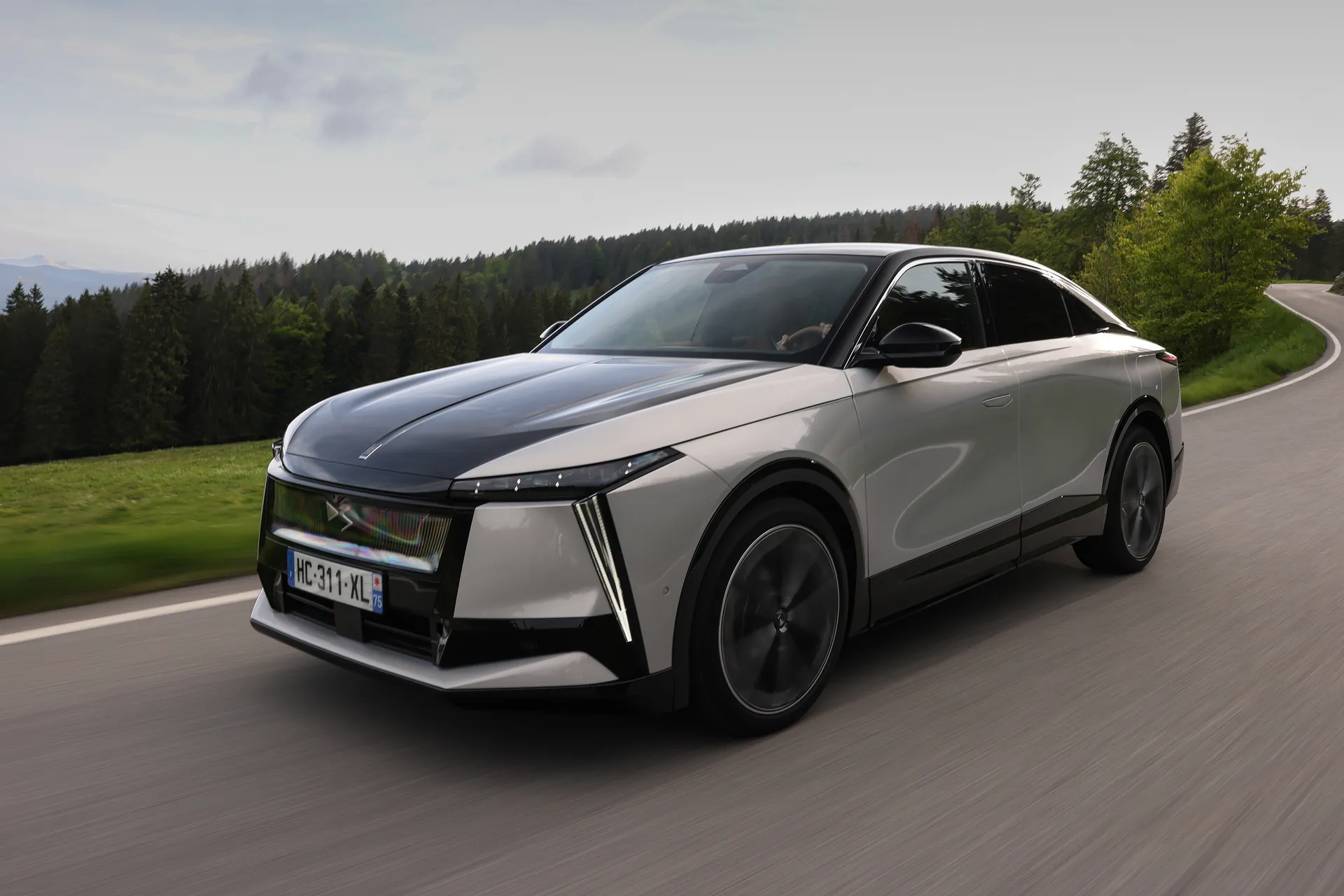
DS likes to make a big deal of the No8's comfort, and thankfully, it does deliver on that front. You get a set of adaptive dampers that work together with a special camera that scans the road surface ahead to see how good (or indeed bad) the road surface is, setting up the chassis as necessary.
The one caveat is that you need to set the suspension right in the first place. There's a Comfort mode for the car, but this, weirdly, isn't the most comfortable way to have the car. The suspension ends up a bit wallowy, with the car awkwardly pitching and wobbling around like a cross-channel ferry on a windy day.
The normal mode gives much more control over the car's body movements without ever feeling too harsh. You can also firm them up to make the car feel more sporty, although even set thusly, the DS No8 never feels like a car that's particularly interested in being driven quickly.
It's not bad, with the body roll fairly well contained, but it doesn't take much to make the front tyres squealing in protest at what you're subjecting them to. The all-wheel drive version feels a bit more comfortable on a twisty road owing to its additional traction, but the vast majority of its power goes to the front wheels, so most of the time, you might not notice the difference in the way it drives.
The defining feature of the way the DS No8 drives has nothing to do with the suspension or the motors, however. It's the steering wheel. It's an X shape, something which, as far as we can work out, hasn't ever been done in a mainstream production car. There's a reason for that. Several reasons, actually.
Although DS has designed what it calls 'grip zones' at the quarter-to-three positions, they still don't give as much leverage as actual spokes. Instead, then, you end up naturally wanting to grip the upper spokes in a ten-to-two position. When you're undertaking a manoeuvre that involves quite a bit of lock, it's easy to get confused when re-centring the wheel, but you would probably get used to this in time.
What motors and batteries are available in the DS No8?
The DS No8 is available with either a 74kWh battery or a 97.2kWh 'Long Range' pack. In terms of motors, the base setup involves a single one powering the front axle, providing 230PS and 245Nm of torque with the smaller battery, or 245PS (torque unchanged) if combined with the bigger one.
That extra power isn't enough to fully offset the extra weight of the bigger battery, so the FWD Long Range needs 7.8 seconds to hit 0-62mph, while the smaller battery car manages the same in 7.7. The single motor car doesn't feel slow, but it never seems in a massive hurry either.
The dual motor car, on the other hand, gives a prolonged feeling of strong acceleration that pins you back in your seat. 350PS and 511Nm of torque mean it'll do 0-62mph in 5.4 seconds. It can only be combined with the larger battery.
DS No8 range: How far can you travel on a charge?
The FWD Long Range can manage up to 466 miles on a full charge, a seriously impressive number that makes it one of the longest-range electric cars currently on sale. Even once you knock a good chunk off to account for the fact EV range figures are notoriously difficult to achieve in real-world driving scenarios, the Long Range will still be able to go a long way (we reckon well over 300 miles) without needing a charge.
Speccing the dual motor powertrain sees that figure drop to a still very good 411 miles. If you stick with the standard 74kWh battery, meanwhile, you're looking at up to 327 miles according to the WLTP figure. Bank on that being about 250 miles in reality.
Refinement and noise levels
Ride comfort is only one part of the equation for something hoping to be considered a luxury car. It also needs to be quiet, which thankfully, the DS No8 certainly is. It's hushed on the move, with little in the way of wind or road noise entering the cabin. It helps that the No8 doesn't have to worry about engine noise, but on the flipside, this means any sound from other sources wouldn't have anywhere to hide, making it all the more impressive how hushed this car is on the move.
Safety equipment: How safe is the DS No8?
At the time of writing, the DS No8 had not been crash-tested by Euro NCAP. There's a reassuringly generous level of standard safety equipment, with autonomous emergency braking, blind-spot detection, lane assistance and a driver attention monitor included as standard.
That's a pretty typical assortment of safety features at this price, but there's one interesting addition we've not seen before – pedal misapplication prevention. It uses the parking sensors to figure out if the driver has suffered from the phenomenon of pedal confusion, reacting to hopefully stop the potentially disastrous consequences.
DS No8 charging times: How much does it cost to charge?
"A recharge rate of 160kW puts the DS No8 a fair way behind rivals that manage over 300kW, but this doesn't tell the whole story."

That's because a healthy charging curve means you can add 124 miles of range in around 10 minutes if the battery is between 20% and 55%. Given how far the No8 can go on a full charge, especially the bigger battery model, that might be all you need in all but the longest of drives.
When more is indeed needed, it'll be about 30 minutes to bring the battery from 20% to 80%. Doing the same from a 7.4kW domestic wallbox will take seven hours and 48 minutes, or an extra hour on top for the Long Range. Times either of those by at least three if you're charging with a three-pin plug, which is worth avoiding if you can.
In terms of cost, expect it to be just over £10 for that 20% to 80% charge at home on the smaller battery, or just under £15 for the Long Range. Savvy EV owners will get themselves on a variable electricity tariff, which could see those figures tumble if you only recharge at certain times of day.
DS No8 reliability and warranty
As a young brand whose cars are slow sellers in the UK (it sold only just over 1,000 cars here in 2024), there's not enough ownership data to place DS in the HonestJohn.co.uk satisfaction index, our usual go-to source for reliability information.
However, it doesn't bode well that of the 10 least reliable car brands in the most recent survey, six (including Citroen and Peugeot) were from the same Stellantis group of manufacturers. On the other hand, as an EV, the DS No8 has fewer moving parts than a petrol, diesel or hybrid equivalent, so in theory, there's less to go wrong.
The warranty is nothing special at all, at three years and 60,000 miles (whichever comes first). As is the norm for EVs, the battery is covered by a separate 100,000-mile, eight-year warranty.
DS No8 insurance groups and costs
An insurance group wasn't available for the DS No8 at the time of writing. As an EV with a relatively high value, it'd be sensible to expect reasonably chunky insurance costs. Shopping around for a competitive quote will be especially important.
VED car tax: What is the annual road tax on a DS No8?
EVs are no longer exempt from paying Vehicle Excise Duty (VED) or car tax. It's now £195 a year across the board, regardless of how your car is powered. That's not the end of the world, but what might sting more is that electric cars are also now liable for the government's premium car tax surcharge. All versions of the No8 are well beyond the £40,000 threshold, which is based on RRP with options, so you'll need to shell out an extra £425 from years two to six of ownership.
DS No8 price
"With a starting price of £50,790, the No8 undercuts a lot of its intended rivals. Whether that's enough to tempt many buyers away from the more obvious options, we'll have to wait and see."
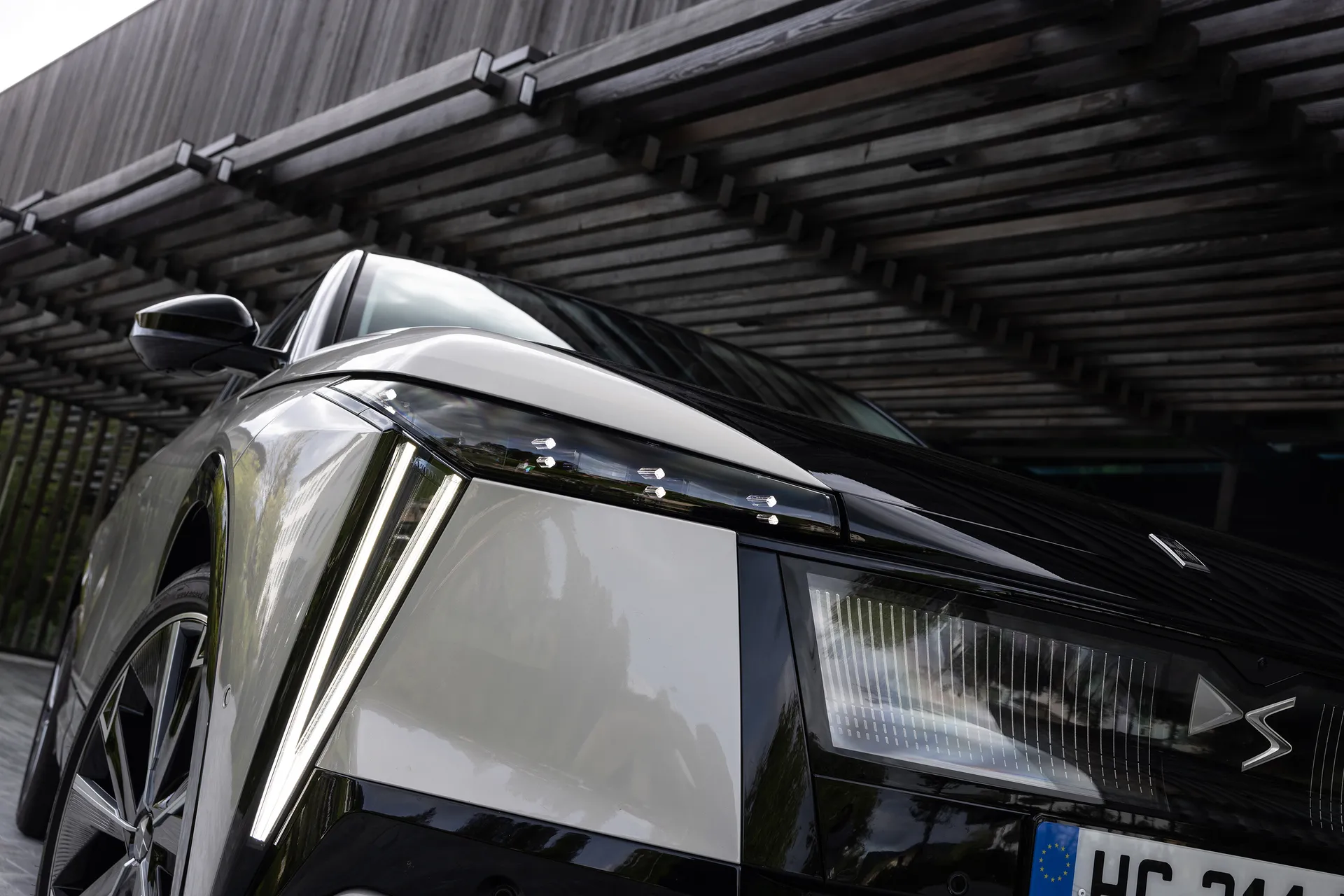
That £50,790 gets you into a Pallas trim with the smaller battery, with the Long Range bumping this up to £54,690. If you want the Etoile, it's £54,790 for one with the smaller battery, £59,290 if specced as a FWD Long Range, or £63,290 for an AWD Long Range.
This makes the No8 by far the most expensive car we've yet seen from DS, but at the same time, the up-front cost is cheaper than a lot of rivals. The cheapest Polestar 4, for example, has a list price of £60,000, with the most expensive coming in at £68,000. The Audi Q6 Sportback e-tron meanwhile, starts from £63,000.
The cash prices will be moot for many, however. Although the 'Benefit in Kind) (BiK) for EVs has gone up, it's still only 3%, which makes vehicles like the DS No8 extremely affordable company cars.
Trim levels and standard equipment
DS makes life easier than most in the configurator, offering only two well-specified trim levels and just a handful of optional extras on each.
The base spec Pallas includes 20-inch alloy wheels, tinted rear windows, acoustic glass, an eight-speaker sound system, a 16-inch infotainment system, wireless Android Auto/Apple CarPlay, dual-zone climate control, front and rear parking sensors with a rear camera, electrically heated and folding door mirrors, a heated steering wheel, an electric boot and keyless entry/start.
The range-topping Etoile adds an illuminated front grille, DS Pixelvision adaptive headlights, 3D LED rear lights, a front parking camera, comfort seats with neck warmers, an extended head-up display, a wireless smartphone charger, a hands-free powered boot and a digital rear-view mirror.
Ask the heycar experts: common questions
How much does a DS No8 cost in the UK?
What's the range of a DS No.8?
Is DS a luxury brand?
Get our latest advice, news and offers
Keep me updated by email with the latest advice, news and offers from heycar.
By submitting you agree to our privacy policy
